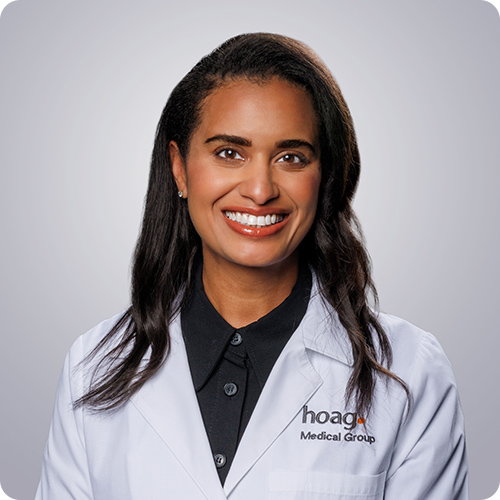
Kaitlin Jones works to find joy in the little things.
Jones, 31, said it’s a priority of hers to look for silver linings, especially when she’s followed by something of a “grim reaper.”
For all intents and purposes, Jones looks like any average woman her age. But just because she doesn’t look ill doesn’t mean that she isn’t; Jones has a rare genetic condition, the vascular type of Ehlers-Danlos syndrome, also known by the syndrome’s community as VEDS.
“VEDS is a defect in Type III collagen,” Jones explained in a recent interview. “You have a faulty type of collagen, and so the connective tissues in your body become very weak. This puts us at risk for life-threatening complications where arteries and organs can spontaneously rupture and bisect.”
Jones, a physician’s assistant herself, said the condition can manifest differently, depending on things like a person’s age and family history. Her maternal grandmother had the syndrome, and the family believes she passed it down to Jones’ mother, and then Jones and her brother, Trevor, inherited it.
She currently receives care at Hoag’s Jeffrey M. Carlton Heart & Vascular Institute and lives a relatively normal life, but the path to finding help took nearly six years after she was diagnosed.
Jones said there were histories of complications in her family in the past, but they were never diagnosed until around the time that her brother was 17 and had an aortic dissection — in which a tear occurs within the inner layer of the aorta.
“What happened to my brother was crazy abnormal, so that’s what led us to look for answers for why this happened to him. We went to the Mayo Clinic and they sent his DNA sample to a lab in Seattle,” said Jones. “They diagnosed my brother when he was 17. My mom, her sisters and her mom … and several cousins are related to this.”
As for Jones? She hesitated to get diagnosed until after her mother died of breast cancer in 2012.
“I was only 14 when [my brother] had nearly died from this aortic dissection and my mom had so much guilt about her son having this life-threatening condition and her passing it to him that I didn’t want to confirm my diagnosis at that time,” she said.
Jones was formally diagnosed when in 2014 when she was 24.
“It’s incredibly frustrating living with this condition. Not only does the general population not know much about it, but neither does the healthcare community,” said Jones. “When I went through school, I heard the condition mentioned a few times, but we never had an in-depth understanding of it.”
Jones met with doctors at UCLA, Cedars-Sinai and went as far as Maryland to see a specialist at the Johns Hopkins Hospital, but said treatment at the latter just wasn’t feasible because she lives in Long Beach.
A few years ago she found out about the Jeffrey M. Carlton Heart & Vascular Institute. Her cousin, who also has VEDS, was seeking a medical team to help her through pregnancy.
Jones said she spent at least three hours with Dr. David Liang at their first appointment, during which she felt for the first time she was being cared for adequately both physically and emotionally.
Liang specializes in cardiology and leads the clinic for Marfan Syndrome and Related Conditions in the Elaine & Robert Matranga Aortic Center, which is wrapped inside of the institute.
“VEDS is quite rare, probably occurring in 1 in 50,000 to 100,000 people, so most doctors will never see a case in their careers, so their experience is usually only from the textbook in medical school,” said Liang. “In some cases this results in the diagnosis being missed until something catastrophic happens and specialists are called in.”
Liang said access to specialists for rare conditions is always an issue.
Jones faced difficulty in accessing care, even when she finally found a specialist, because of geographical constraints. But Liang said other issues can also crop up, such difficulties with a patient’s healthcare insurance. Also, he said, physicians and their patients alike may not be aware of specialized centers that can treat certain conditions.
Jones said she gets scanned for abnormalities every one to two years and now has an emergency plan in the event that she experiences a dire complication from VEDS. She knows one can happen at any time and in anyone at any age who has her condition.
Her brother died of a sudden artery rupture last year at the age of 34, leaving behind both his wife and 14-month-old daughter.
“I do wonder if the healthcare providers at that hospital … if they were more aware of that condition, if the outcome would have been any different,” said Jones.
Jones said her brother’s death is part of the reason that she wants to help bring awareness to the condition at the Marfan Foundation’s E3 Conference this July. The conference is being hosted in collaboration with Hoag Memorial Hospital Presbyterian at VEA Newport Beach.
“Currently, experts estimate that about 1 [in] 50,000 people have vascular Ehlers-Danlos Syndrome, or VEDS, but many people remain undiagnosed. When people get this diagnosis, they don’t often get a chance to meet others in their local area and may not have any local experts available for medical care,” said Katie Wright, director of advocacy group the VEDS Movement, in a statement.
“For many, this E3 conference will be their first time meeting others affected by VEDS and similar conditions, and their first or only opportunity to meet the experts in VEDS and related conditions, like Marfan and Loeys-Dietz syndromes,” said Wright. “Bringing together a community of people with these conditions can make an isolating condition feel common, and meeting the experts can make a life-saving difference in someone’s medical care.”
In spite of her condition, Jones said she tries to find happiness in the small moments because she just doesn’t know when something might happen. She encourages others with her condition to do the same and to tell the people they love that they love them.
She encourages people who suspect they might have a similar condition to self-advocate and push to be seen by a geneticist.
“You hear a lot of stories within the VEDS community that it takes years to get a diagnosis,” said Jones. “They met with specialists and doctors who said everything was normal. They didn’t have this disorder, but they didn’t get genetic testing. Keep pushing — if you do suspect that you or a family member has this disorder, seek out genetic counseling.”
By Daily Pilot









